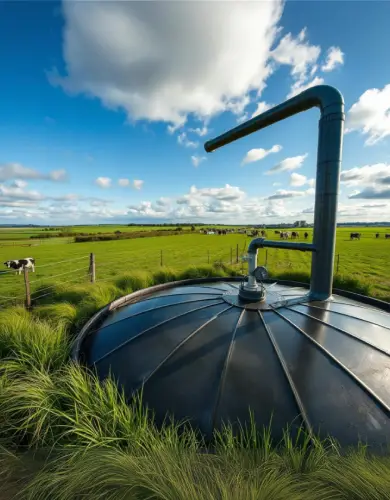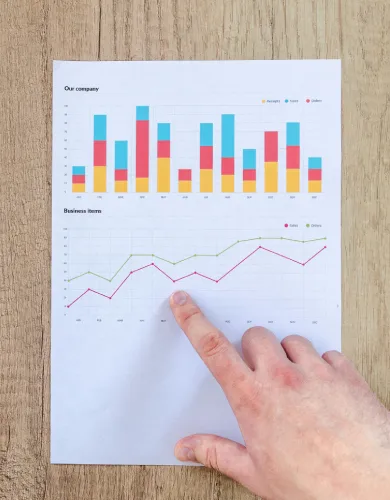Landfill tax for businesses
The UK government taxes waste disposed of at landfill sites to encourage more recycling and to offset the environmental impacts of landfill waste.
In the 2023 tax year, the government raised £740 million from the landfill tax.
Businesses pay the landfill tax as part of commercial waste collection costs for their general waste collections.
In this guide to the landfill tax, we cover:
- What is the landfill tax?
- Landfill tax rates
- How can a business pay less landfill tax?
- Where does the landfill tax money go?
- Landfill tax fraud
What is the landfill tax?
The Landfill Tax is an environmental tax levied on the disposal of both residential and commercial waste in UK landfills.
It was introduced in 1996 to encourage waste reduction, recycling, and environmentally friendly waste management practices.
The tax is charged per tonne of waste and has two rates:
- A lower rate for less polluting, inert waste.
- A standard rate for most waste types.
The rates are subject to annual review and adjustment. The government uses revenue generated from this tax for its public spending and to fund environmental and community projects.
Why was the landfill tax introduced?
The introduction of the landfill tax was spurred by growing environmental challenges in the 1990s.
During this time, the UK faced increasing waste volumes due to changes in consumption habits, and landfill sites were quickly reaching capacity. Additionally, there was limited suitability for new landfill sites, especially in densely populated locations like London and Birmingham.
At the same time. The EU was shifting towards more sustainable waste management practices, particularly influenced by the policies of Northern European and Scandinavian member states.
Coupled with the rising environmental awareness of the 90s, the UK became one of the first nations in the world to implement fiscal measures to curb the growing environmental impacts of waste.
Who pays for landfill tax?
While landfill operators settle the tax directly with the UK government, its economic burden trickles down the waste management chain onto businesses and even public organisations like schools and hospitals.
Therefore, businesses in the UK pay for their landfill tax indirectly as part of their waste management costs. The exact form of payment depends on who is in charge of your commercial waste collection:
Private waste firm: If your business waste is collected by a private waste firm, the landfill tax is paid as part of the collection fees, which are a good indication of the tonnage of waste collected as its determined by:
- The size of your commercial waste bins.
- The frequency of your waste collection.
Local council collection: If the council collects your business’s waste, the landfill tax is paid by your council and passed on to your company as part of a paid-for business waste collection service.
💡 Who are landfill operators? Any entity with an official license to dispose of waste in a UK landfill qualifies as an operator. This role is typically assumed by waste management companies, both small and large, as well as some local councils. See here for a list of landfill site operators.
Landfill tax rates
The landfill tax has three tiers for waste types disposed of at landfill sites. Here’s a summary:
- Fully exempt – Waste from the dredging for waterways, mining materials, pet cemeteries, quarry filling and visiting forces.
- Lower rate – Materials with low polluting potential in a landfill (most commonly rocks, bricks, soil, and concrete from the construction industry).
- Standard rate – Any other waste disposed of at landfill that isn’t exempt or at the lower rate, applying to most types of commercial and domestic waste.
These rates are reviewed and adjusted annually for each tax year to reflect inflation, continue incentivising waste reduction measures, and reduce the environmental impact of waste. The adjustments for 2024 were made in line with the Retail Price Index (RPI) as part of the government’s environmental and fiscal policy.
What are the current landfill tax rates?
The rates for the fiscal year 2024 to 2025 (April 1st 2024 to April 1st 2025) are as follows:
Standard rate: £103.70 per tonne.
Lower rate: £3.30 per tonne.
💡 Devolved landfill tax: Scotland and Wales can technically set their own rates because of devolved waste policy, although they currently remain aligned with the UK’s.
Source: Gov.uk Landfill tax rates
How much have landfill tax rates increased over time?
Since its introduction in 1996, the landfill tax has become considerably more expensive. This increase is partly due to inflation but also reflects the government’s strategy to utilise fiscal measures to minimise the environmental impact of waste.
The table below highlights this increase since 2013, and shows the RPI index for comparison with UK inflation rates.
| Year | Standard Rate (£/tonne) | Lower Rate (£/tonne) | Retail Price Index (RPI) |
|---|---|---|---|
| 2013-14 | 80.0 | 2.5 | 1.5 |
| 2015-16 | 82.6 (+3.25%) | 2.6 (+4.0%) | 1.6 |
| 2016-17 | 83.4 (+0.97%) | 2.65 (+1.92%) | 1.8 |
| 2017-18 | 86.1 (+3.24%) | 2.7 (+1.89%) | 1.9 |
| 2018-19 | 88.95 (+3.31%) | 2.8 (+3.7%) | 2.1 |
| 2019-20 | 91.35 (+2.7%) | 2.9 (+3.57%) | 2.3 |
| 2020-21 | 94.15 (+3.07%) | 3.0 (+3.45%) | 2.5 |
| 2021-22 | 96.7 (+2.71%) | 3.1 (+3.33%) | 2.7 |
| 2022-23 | 98.6 (+1.96%) | 3.15 (+1.61%) | 2.9 |
| 2023-24 | 102.1 (+3.55%) | 3.25 (+3.17%) | 3.1 |
| 2024-25 | 103.7 (+1.57%) | 3.30 (+1.54%) | n/a |
💡 Blast from the past: When the landfill tax was introduced in 1996, the standard and lower rates were £7 and £2 per tonne, or 15 and 1.7 times cheaper, respectively.
How much landfill tax does my business need to pay?
The amount of landfill tax your business must pay (indirectly) ultimately depends on the weight of the waste disposed of by the operator handling your commercial waste disposal.
As a result, the less waste you generate, the less they receive for disposal, and the less they have to pay the government. In terms of actual transactions, your business will pay for this as part of its waste collection costs, which means you first need to understand how these are calculated.
How are commercial waste collection costs calculated?
Your commercial waste collection provider will adjust its fees depending on two things:
- The size of the bin that is rented to your business property.
- The frequency of waste collection.
These factors are assessed together at the start of a business waste contract based on estimated waste generation. This approach allows them to charge fees proportional to what they will incur in landfill tax payments to the operator.
See our commercial waste collection costs article for in-depth information.
How can a business pay less landfill tax?
A business will indirectly pay the landfill tax when its waste is disposed of at a landfill site. Here, our business waste experts offer practical advice to avoid the landfill tax:
Waste prevention and minimisation
Waste prevention and minimisation is the first step of the waste hierarchy, focusing on eliminating waste generation. Examples include giving employees mugs instead of disposable cups and cancelling unnecessary magazine subscriptions.
For more ideas on reducing waste in specific sectors, refer to our full guide on waste minimisation for businesses.
Use a recycling service
Dedicated commercial recycling collections transport waste to recycling facilities rather than burying it in a landfill.
Dedicated recycling services offer cheaper collection costs because of the inherent value of recyclable materials, as well as the avoidance of the landfill tax.
In the UK, the most common commercial recycling services are:
- Commercial dry mixed recycling
- Commercial glass recycling
- Commercial cardboard recycling
- Commercial food waste collections
Incineration
General business waste collections are a necessity for most businesses.
It is possible to avoid the landfill tax on general business waste collections by choosing a “zero-to-landfill” local waste provider.
These environmentally conscious waste firms will transport general business waste to an incinerator facility, where renewable energy is recovered from the waste.
At Commercial Waste Quotes, we’ve helped thousands of businesses find a better waste provider. Explore the services available in your area on our locations page.
Where does the landfill tax money go?
A large portion of the landfill tax revenues goes into funding the government’s general public spending, and a smaller portion goes to fund environmental and community programs related to landfilling issues as per below:
Public spending: A significant portion of the landfill tax revenue goes into the general government revenue pool, which funds public services, infrastructure projects, hospitals, education, and other government initiatives.
Landfill Communities Fund (LCF): This tax credit scheme enables landfill site operators to contribute money to organisations that carry out projects that benefit the communities and environments around landfill sites. The scheme is designed to offset some of the negative impacts of landfill operations by supporting various environmental and community projects.
The exact distribution and use of the revenues can vary and are ultimately a government decision.
Landfill tax fraud
The UK government recognises that there is a landfill tax “gap” or shortfall of approximately £100 million pounds each year due to illegal evasion of the landfill tax by waste firms.
Although the scale of landfill tax evasion is an estimate, a recent report by the Environment Agency recognises widespread evasion of the landfill tax through:
- Misdescription of waste to qualify for lower or exempt tax landfill tax rates.
- Unauthorised landfill sites operating without proper permits.
- Fly-tipping.
- Underreporting of taxable waste disposals.
Compliance measures to prevent evasion
HMRC and local authorities combat landfill tax evasion by requiring signed paperwork whenever waste is transferred between parties.
Under commercial waste regulations, British businesses must keep a waste transfer note when using a waste firm. This system enables local agencies to track waste disposal and hold firms accountable for landfill tax evasion.
The Government’s landfill tax evasion web page allows concerned citizens to report unauthorised disposals of waste.

